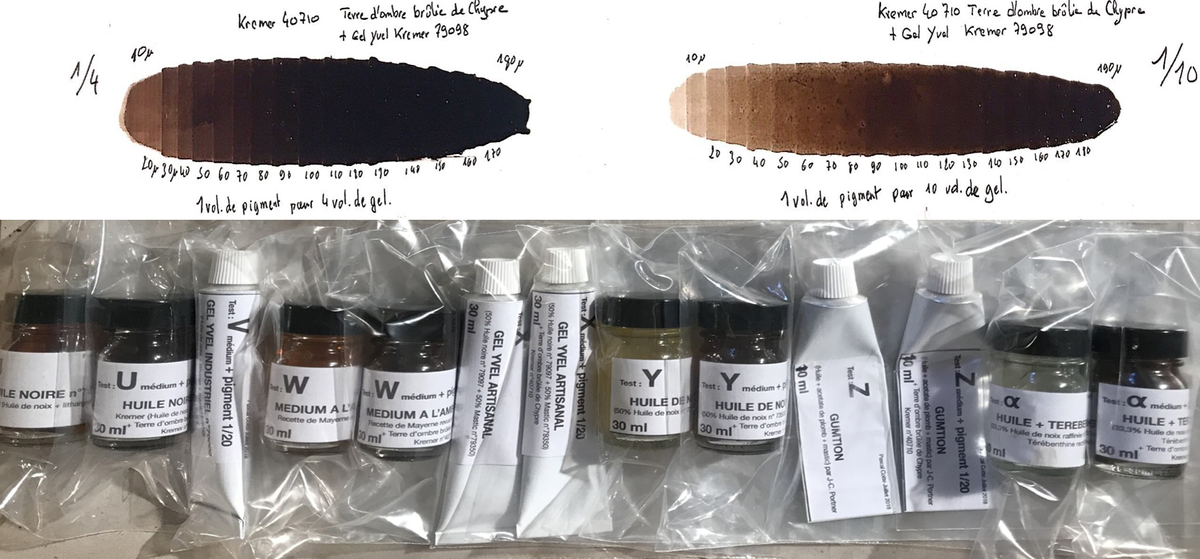From the transparencies of glacis to the brilliance of the acrylic: techniques and materials between 15th and 20th centuries

All painting techniques provide for the application of colour to a surface. It is necessary to mix the colouring principle in a suitable medium. The choice of the support, the application method and the medium has important implications on the final product and provide useful information not only on the artists' palette but also on the technologies of the time.
Over the centuries, the evolution of the painting technique has undergone a progressive change characterized by different aspects such as the choice of the materials constituting the support and the pictorial layers, the type of application and of pigments working. The progressive abandonment of tempera in favour of oil as medium is the first step. At the dawn of oil painting, Flemish artists used to apply transparent glacis of various thickness, rich in binder and with low pigment contents, on opaque or semi-opaque layers. This technique allowed to obtain optical effects, mold the shapes and create a sense of depth and relief. For over 400 years and until the advent of acrylic, oil painting has been the most used painting technique.
The project, in collaboration with Lumière Technology, provides the study of the ancient recipe books and the painting treatises, reaches the deepening and the cataloging of written sources and the individuation of the atelier materials in more recent times. Then the focus is the reconstitution of some documented recipes made with different types of binders/pigments /dyes in order to study the test samples from various perspectives, allowing to be compared them in terms of:
- optical and colorimetric properties responsible for the final effects of transparency, saturation and brilliance;
- rheological and mechanical properties characterizing the behavior of these systems during application and drying. The degree of viscosity and rheological behavior.
- characteristics of degradation.
The project is financed by funds from the Diagnostic Laboratory, pertaining to the Diagnostics & Art research line and deriving from R_PRIV - Projects with third party funds, tariff and liberal contributions, ACT_PR - Third party contracts from private funds, SPP_PR - Tariff contracts from private funds, CNTR_LB_PR - Liberal contributions from private funds, and with the participation of Lumière Technology.
Scholarship (2016-2018) connected to the project: "Treatises, documentary sources and scientific analysis for the study of painting techniques related to the Italian and European areas between the 15th and the 18th centuries".
Fixed term contract (2019-2020) connected to the project: “From the transparencies of glacis to the brilliance of the acrylic: techniques and materials between 15th and 20th centuries”.
Research fellowship (2020- ) connected to the project: "Treatise, documentary sources and scientific analysis for the study of Guercino's painting technique and Baroque painting".
Cultural Agreement - Lumière Technology (n.80/2019 prot.n.1323): https://beniculturali.unibo.it/it/dipartimento/accordi-e-collaborazioni
Research group: Ghelfi Barbara (associate professor, Unibo), Matteucci Chiara (senior graduated technician, Unibo), Apicella Salvatore Andrea (Lumière Technology, Paris), Cataldo Martina (scholar fellow, Unibo), Tarantola Gaia (Unibo), Cotte Pascal (Lumière Technology, Paris), Minelli Matteo (associate professor, Dipartimento di Ingegneria Civile, Chimica, Ambientale e dei Materiali, Unibo), Rizzà Laura (adjunct professor, Unibo), Thistlewood Jevon (Ashmolean Museum, Oxford), Bevilacqua Fabio (adjunct professor, Unibo).